expireddavid3808 posted May 22, 2021 08:19 PM
Item 1 of 5
Item 1 of 5
expireddavid3808 posted May 22, 2021 08:19 PM
DuctlessAire 12 Seer 12000 BTU 220V 1-Ton Ductless Mini Split Air Conditioner
+ Free Shipping$779
Home Depot
Visit Home DepotGood Deal
Bad Deal
Save
Share
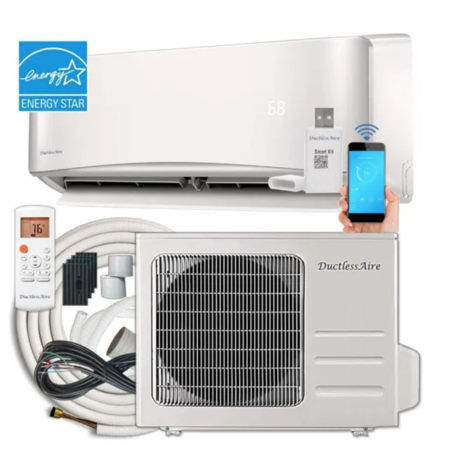
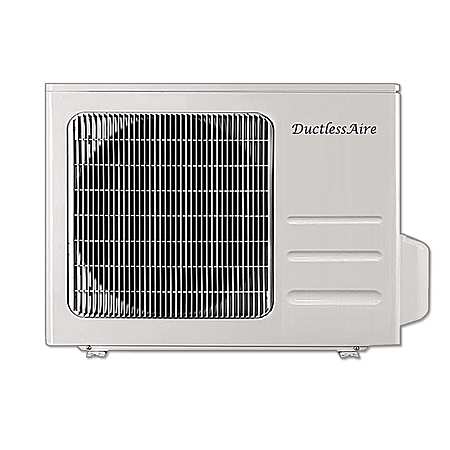
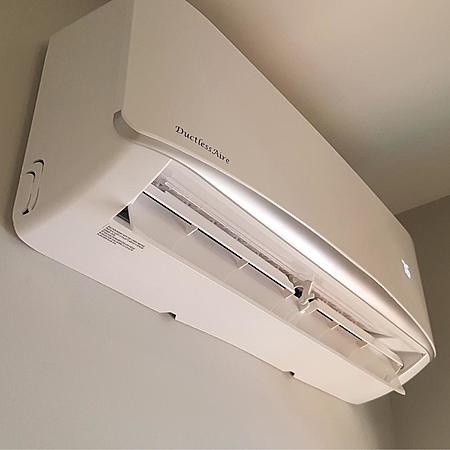
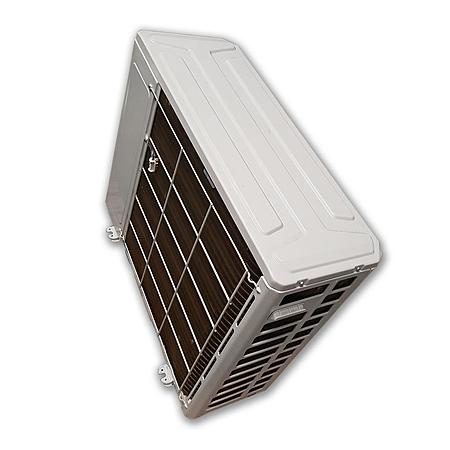
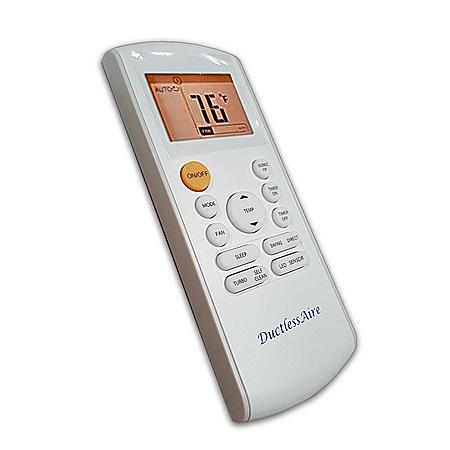

Leave a Comment
Top Comments
This works if you're handy since you'll probably do a better job. Doing things like a nitrogen pressure test, which aren't stated in the manual, is a good practice that many installers will skip unless it's explicitly stated in the manual like in some Mitsubishi units. This practice makes sense for heat pump R410A units which will see upwards of 450 psi on the head when in heat pump mode. But expect to spend $500-$700 on tools if you want to do it right.
Edit: if you want me to comment more on the tools I went with, let me know.
Edit Edit: As promised, I posted my tools breakdown reply on #99 of this thread, but I'm also going to post it below too. If this angers the mods then please remove post #99.
Everyone can decide what you need for your install versus others, but here's the tools that I bought for mine:
Nitrogen Tank w/ Regulator (got on Craigslist)1 $ 100.00
Appion CTEE14 MegaSeal Low-Loss Charging T-Fitting - 1/4'1 $ 49.94
Appion MGAVCR Mega Flow Vacuum Rated Valve Core Removal Tool – 5/16" System Connection1 $ 48.48
CPS VG200: Vacuum Micron Gauge with Digital LCD Display1 $ 146.21
Refrigeration Technologies RT201B Nylog Gasket/Thread Sealant1 $ 10.25
Yellow Jacket 42004 Series 41 Manifold with 3-1/8" Gauge, psi, R-22/404A/410A1 $ 112.29
Yellow Jacket 19173 R-410 5/16" to 1/4" coupler w/ schrader valve.1 $ 14.26
CPS Pro-Set R410A Flare Gauge1 $ 19.81
CPS BLACKMAX BFT850 Ultra-Lightweight R-410A Clutch-Type Ecentric Flaring Tool1 $ 130.03
Reed Tool DEBO Pencil Shape Deburring Tool for Copper1$11.68
RIDGID 32975 Model 103 Close Quarters Tubing Cutter, 1/8-inch to 5/8-inch Tube Cutter , Silver , Small1$12.67
Johnsen's 6915 Vacuum Pump Oil - 12 oz.1 $ 9.79
PITTSBURGH AUTOMOTIVE 3 CFM Two Stage Vacuum Pump1 $ 149.99
PITTSBURGH 3/8 In. Metric Crowfoot Wrench Set, 7 Pc.1 $ 9.99
For mine, it was a total of $825-ish, with it being more like $900 after tax. But I bought multiple things that most people don't need to buy, marked in italics, so you can save a lot of money skipping these. These optional tools represent an additional $372.61 ($400.55 after tax, at least where I live) you can eliminate about 50% from the tools budget.
First and foremost, don't attempt to work with electrical or HVAC unless you're pretty comfortable with DIY projects.
The Nitrogen tank is optional for pressure testing. Some say if you can pull a good vacuum and let it sit for a while that is "good enough" and most company's instructions exclude this from the installation instructions. But it's worth considering because when running R-410A in heat pump mode, you'll get high pressure across your head side of the loop. This makes sense because the high-pressure side = heat. So in my head it made sense you'd want to do a pressurization test and a vacuum down test, since one is pushing apart the fittings (pressure) and the other is sucking them together (vacuum). Since the fittings will all be exposed to both types of pressures it makes sense for me. Follow Dakine or Mitsubishi installation manual instructions for nitrogen pressure testing if you opt to do it. Note that most professional installers WILL SKIP THIS unless it's a unit that requires it (think Mitsubishi) and the installer is one of their "diamond" approved installers or whatever.
Secondly, I bought a flaring tool because I had a 2-head system and cut the tubing to fit the installation and make it more tidy. This is optional and I do not recommend it unless you know what you're doing. It also saves money to skip this. Before cutting, you need to make sure your run or runs have the required length to prevent overcharging the system. If you have a single head unit and end up cutting the tubes to 1/2 the length you may have too much refrigerant in the linesets. Refer to your manual or talk to the company before you decide to do this. And if you decide to do it anyways, yes it must be a HVAC specific flaring tool. Get one with the clutch system to prevent overtightening the flare press and make it foolproof. R-410A runs at too high of pressures to get away with subpar flares. Deciding to just accept the standard length of the copper tubing eliminates the costs associated with the Flaring tool, flaring gauge, deburring tool, and pipe cutting tool.
As for the rest, you do not NEED a digital micron gauge, many just use their normal gauge set's low pressure side gage and watch to see if the needle moves. This will also work. Again I wanted to go with professional duty equipment to get an install I'm 100% confident in. That way if the thing dies in a few years I won't have wonder in the back of my mind whether I screwed up the install. I know 100% my install was perfect. I went with the Yellow Jacket brand gauges, although you could in theory just get the low side gauge, hose, and valve if you're just pulling vacuum and save some money. I'm sure the garden variety chinesium brand gauges are probably perfectly fine for a solo install and will cut the cost in half for them.
The Appion Schrader core removal tool and the t-valve are totally optional too. You'd have to do some youtubing to see how they're used, but here's a great video which shows essentially the same setup I bought: https://www.youtube.com/watch?v=81EeY7S
But you can skip those tools and just use the Yellow Jacket 5/16" to 1/4" adapter and be just fine without them. Your pressure drawdown will just take a bit longer since you're going through the Schrader valve, and you'll loose a tiny bit of refrigerant before the schrader valve closes. Skipping these tools will save you $130-$140.
For the vacuum pump I went with a harbor freight 3CFM rated 2-stage vacuum pump. I believe it's rated for sub-30 microns of vacuum which is great, and a review on their site showed a guy pulling 13 microns if I recall correctly. To put this into perspective most manufacturers suggest pulling below 500 microns before charging the system. This is slightly overkill but it works for me.
Lastly I already have a torque wrench but you can get them dirt cheap from harbor freight, and I bought some crowfoot wrenches to use with my torque wrench to torque the bolts to the manufacturer's specifications. Will it really matter if you don't do it to spec? I don't know but I'm not finding out.
Then beyond all of this you'll have to run some 220-240v and have a disconnect box by your run. If you're not a confident DIY'er don't go for this, but if you are then just watch plenty of videos of installations, follow the instructions, and you'll be fine.
Pros-
No duct work is obvious.
On demand which can save heating/cooling bill.
More precise temperature control "zones".
Cons-
The zones play as double edge sword, when moving in or out the heated/air conditioned space takes some getting used to.
The indoor unit hangs on the wall compare to just a register, so the wall is more or less occupied.
Have to run additional electricity to both in door and outdoor units and the tubes from the indoor unit to the outdoor unit.
More filters to clean.
168 Comments
Sign up for a Slickdeals account to remove this ad.
Was recently quoted for a Quad mini split install for $8k, I would need to buy the system and copper/electrical lines. They were going to mount the mini splits with the condensate/copper/electrical going through the attic. I decided not to do it since the guy was not licensed but he did multiple installs.
EDIT: Honestly for the install prices being what they are if anything I would buy a Mitsubishi or Fujitsu or maybe even a Daikin. The hardware is cheap compared to the install costs so buy something solid if you are going to do it,
For DIY, a window AC is still the most practical option. If you have a double-hung window, you can consider this series:
https://www.amazon.com/Midea-Inve...B08677DC
Options for sliding windows really sucks.
I ended up getting two 12k BTU units and assumed no warranty. The good news is that HD states on the product page (in specs) that these are 90-day returnable. Guess they fall outside the "major appliances" and into some other large equipment category. So I basically have a 90-day warranty and for the DIY savings, I'm okay with that.
Manufacturers of HVAC equipment are notorious for writing in their warranties that they are void if not installed by a licensed contractor. I've seen it in warranties from practically every major brand whose warranties I've looked at. I'd like to get an opinion from a lawyer or directly from the FTC whether those warranty stipulations are in fact illegal under Magnuson-Moss. If they are illegal, I wish the FTC would take enforcement action.
Sign up for a Slickdeals account to remove this ad.
Your friend has shared a link to a Home Depot product they think you would be interested in seeing:
MRCOOL Advantage 3rd Gen 12,000 BTU 1 Ton Ductless Mini Split Air Conditioner and Heat Pump - 230V/60Hz
https://www.homedepot.com/p/MRCOOL-Advantage-3rd-Gen-12-000-BTU-1-Ton-Ductless-Mini-Split-Air-Conditioner-and-Heat-Pump-230V-60Hz-A-12-HP-230B/308810702
SKU# 308810702
1. This essentially has no warranty, and has none if you install yourself (and yes, the company can require you to use an authorized installer/parts).
2. You probably won't be able to find anyone to install this for you. 1. They aren't making any $ on the equipment and 2. (most importantly) they don't want to be responsible for future repairs. You see, most HVAC companies guarantee their work, (leaks, compressors, fans) for x number of yrs and they don't want to be on the hook for equipment they didn't procure.
3. Most people don't have the tools ($$$$'s) or skill set to properly install the unit themselves. That being said, there are some old-timer tricks to install without some of the specialized tools, but it doesn't result in the best install and could even be illegal.
4. Most techs agree that some of the best units are mitsu, Fujitsu, diakin. I have no experience with ductlessaire so have no opinion but I generally stay away from Chinese units. However, this is cheap and looks like it might have good reviews. But who knows if it'll last compared to the other brands.
5. There are many brands that have heat pumps that are effective down to very low temp, but you will pay more money for them.
6. The power is almost always first ran to the outside unit (condenser). The outside unit then powers the inside unit with cables/conductors ran alongside the lineset. Oftentimes you have to buy this cable sperate, just like the lineset.
7. The "precharged" unit doesn't refer to the lineset, but to the condenser. The amount of Freon "included" is either the amount required in just the condenser, or the amount required in the condenser and x number of feet of lineset (used to be around 15 ft). I think they are now just including the condenser, because if you had less than the 15 ft lineset you'd have to get rid of some Freon, and they don't want people venting it.
My advice for people looking for an installer is to quiz them a little bit to get a feel for their competency. Ask them if they use a micron gauge for evacuation. If they say no, call someone else. If they say yes, ask them what level of vacuum they shoot for during evacuation. If they say 500 microns or better, you're probably dealing with someone who at least has a clue what they're doing.
As far as refrigerant lines, pre-charged or not, like say, a commercial ice maker, most air conditioning systems require a minimum length you need to know. On these ductless, I prefer the head a little higher so the oil runs back into the compressor, but there is no pretty way to coil the excess line that you don't want to create an oil trap.
Not many people are going to have the tools, the often required license to buy the freon, the ability to run the required electric, the carpentry skills, etc. Hiring someone to vacuum the system is the easy part.....and if doing so, yes, have them fit the line and get rid of that excess mess.
As an option, you can order the Mr Cool and others with a specific length of pre-charged lines. Personally, I might opt for a USA made system from say, Ideal, but it is impossible to match the price of the China models that for the most part, are using Japanese technology in their compressors.
My advice for people looking for an installer is to quiz them a little bit to get a feel for their competency. Ask them if they use a micron gauge for evacuation. If they say no, call someone else. If they say yes, ask them what level of vacuum they shoot for during evacuation. If they say 500 microns or better, you're probably dealing with someone who at least has a clue what they're doing.
https://m.youtube.com/watch?v=rHkJbU1
Both pieces are already precharged with refrigerant, once you screw the pipes together it is all set.
Sign up for a Slickdeals account to remove this ad.
Manufacturers of HVAC equipment are notorious for writing in their warranties that they are void if not installed by a licensed contractor. I've seen it in warranties from practically every major brand whose warranties I've looked at. I'd like to get an opinion from a lawyer or directly from the FTC whether those warranty stipulations are in fact illegal under Magnuson-Moss. If they are illegal, I wish the FTC would take enforcement action.
Leave a Comment